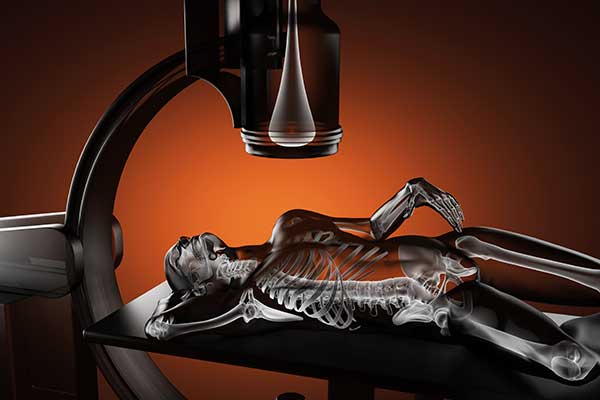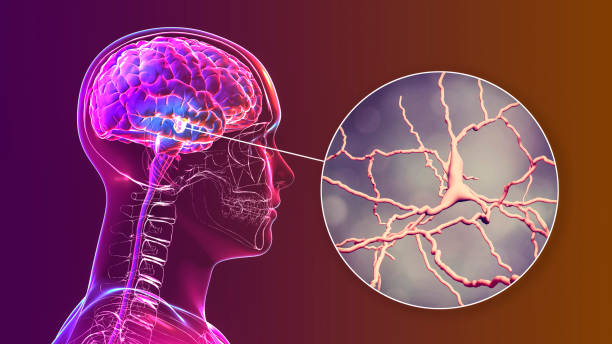Spinal fractures in the elderly are preventable with simple X-rays
Among older people, vertebral compression fractures are very common, and those with such fractures are at high risk of incurring new ones. Findings in a new thesis from the University of Gothenburg indicate that a simple X-ray method should be introduced as a routine procedure in Swedish health care. More elderly patients can then be diagnosed and given the most efficacious drugs.
Vertebral compression means that the spine is compressed, causing a fracture in one of the vertebrae. Vertebral compression fractures (VCFs) occur easily in people with osteoporosis, and affect older women in particular.
The thesis confirms previous research showing that 25% of older women between 75 and 80 have VCFs. However, the majority are unaware that these are causing their back pain – only one in three is diagnosed. Based on population statistics from Statistics Sweden (SCB), there are at least 40,000 older women in Sweden who do not know they have VCFs.
Diagnostic imaging required
Vertebral compressions do not necessarily result in distinct symptoms. Imaging is needed to detect these spinal fractures. If more people were diagnosed, many fractures, much suffering and heavy costs could be avoided.
“People who have had a vertebral compression fracture have more than twice the risk of getting a new one, which means they belong in the high-risk group. So they should be considered for the most efficacious drugs that not only stop bones from collapsing, but also build them up,” says Lisa Johansson, doctoral student at Sahlgrenska Academy, University of Gothenburg, who authored the thesis.
Efforts to prevent fractures in older people vary around the country. In some regions, but not all, there are established “fracture liaison services,” as they are known in Sweden. These ensure that investigations of fractures are structured in a way that greatly reduces the risk of repeat fractures. When elderly patients have suffered fractures, their hip and lumbar spine bone density is examined with the dual-energy X-ray absorptiometry (DXA) method, to find out if they need treatment for osteoporosis. DXA can then also be used to get a side view of the chest and lumbar spine, with a method called vertebral fracture assessment (VFA), in which the height of the vertebrae is analyzed.
Should be a routine procedure
The thesis shows that VFA is of great clinical benefit, and the results suggest that the method should be introduced as a routine procedure in health care nationwide.
“The VFA method provides a very low radiation dose, and it’s fast, cheap, simple, and effective in finding vertebral compressions. It’s a valuable method for diagnosing relevant compressions, and significantly improves fracture risk assessment in older women,” Johansson says.
The thesis is based on the SUPERB (Sahlgrenska University Hospital Prospective Evaluation of Risk of Bone Fractures) population study, which included 3,028 women in Gothenburg, between 75 and 80 years old. The study shows that the women with VCFs had lower hip bone density to a greater extent, and their physical functional capacity and health was poorer. The women who had an identifiable vertebral compression, even if it was classed as mild, had a markedly increased fracture risk entirely independent from other risk factors and bone density.
Thesis title: Defining the clinical usefulness of vertebral fracture assessment
Source: University of Gothenburg
Full bibliographic information
Defining the clinical usefulness of vertebral fracture assessment, doctoral thesis, ISBN 978-91-8009-568-6 (print), 978-91-8009-569-3 (PDF). This thesis is based on the following studies:
I. Johansson L, Sundh D, Zoulakis M, Rudang R, Darelid A, Brisby H, Nilsson AG, Mellström D, Lorentzon M. The Prevalence of Vertebral Fractures Is Associated With Reduced Hip Bone Density and Inferior Peripheral Appendicular Volumetric Bone Density and Structure in Older Women. J Bone Miner Res. Feb 2018;33(2):250-60. Epub 2017/09/20. http://doi.org/10.1002/jbmr.3297
II. Johansson L, Sundh D, Nilsson M, Mellstrom D, Lorentzon M. Vertebral fractures and their association with health-related quality of life, back pain and physical function in older women. Osteoporos Int. Jan 2018;29(1):89-99. Epub 2017/11/17. http://doi.org/10.1007/s00198-017-4296-5
III. Johansson L, Sundh D, Magnusson P, Rukmangatharajan K, Mellstrom D, Nilsson AG, Lorentzon M. Grade 1 Vertebral Fractures Identified by Densitometric Lateral Spine Imaging Predict Incident Major Osteoporotic Fracture Independently of Clinical Risk Factors and Bone Mineral Density in Older Women. J Bone Miner Res. Oct 2020;35(10):1942-51. Epub 2020/06/17 http://doi.org/10.1002/jbmr.4108
IV. Johansson L, Johansson H, Axelsson KF, Litsne H, Harvey N C, Liu E, Leslie W D, Vandenput L, McCloskey E, Kanis J A, Lorentzon M. Improved fracture risk prediction by adding VFA-identified vertebral fracture data to BMD by DXA and clinical risk factors used in FRAX. Osteoporos Int. 2022 Published online 22 April http://doi.org/10.1007/s00198-022-06387-x





